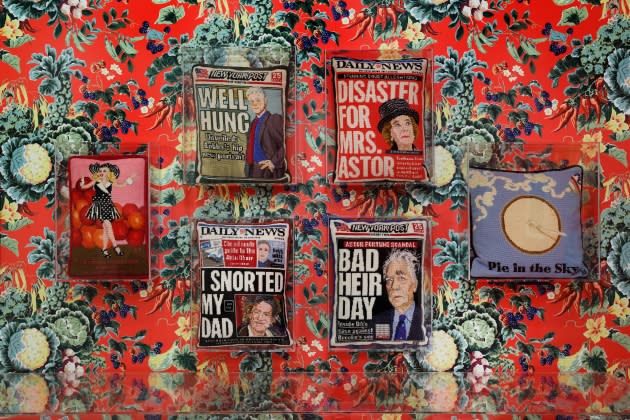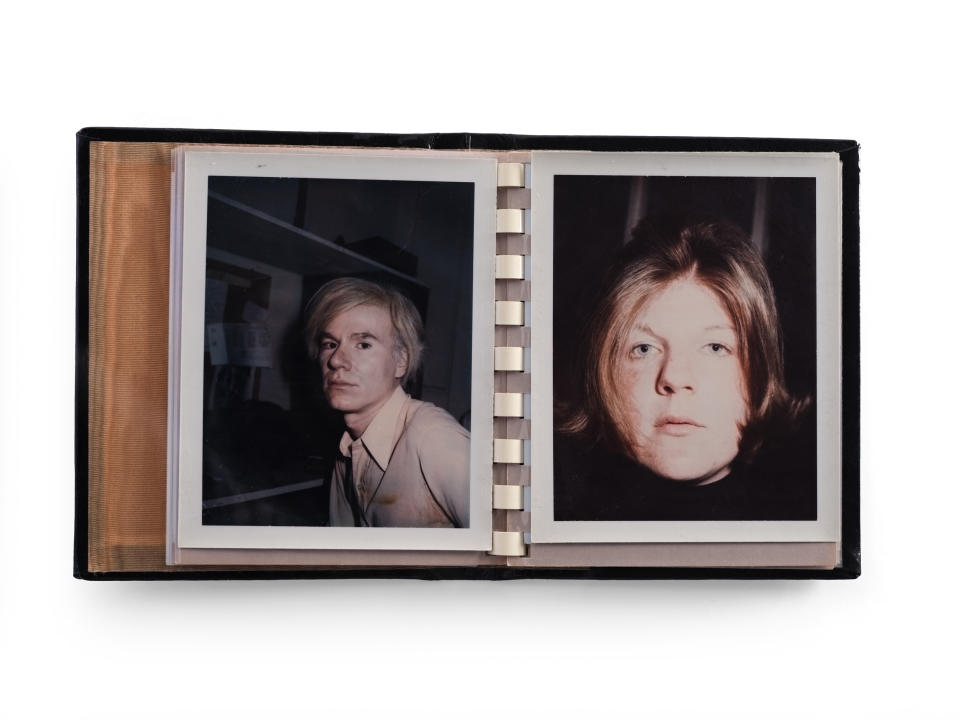At Vito Schnabel Gallery, Brigid Berlin Is the Main Star
- Oops!Something went wrong.Please try again later.

Brigid Berlin, often regarded as Andy Warhol’s best friend, is getting the main character treatment in a new exhibition at Vito Schnabel gallery.
The late artist is the subject of a comprehensive showcase at the gallery’s 43 Clarkson Street location in New York. “Brigid Berlin: The Heaviest” features selections of Berlin’s artwork, alongside mementos from her early childhood and later years. The exhibition title touches on the body weight struggles that defined Berlin’s psyche, while announcing her definitive role in art history alongside her more widely celebrated male colleagues. In this show, Warhol is a footnote to Berlin’s own stardom.
More from WWD
“My goal really was to read Brigid as an autonomous and important artist in her own right,” says show curator Alison Gingeras. “Many people — if people know her — know her through the Warhol connection. It was really crucial to foreground how she was an artist from the get-go.”
The exhibition was supported by Vincent Fremont and Berlin’s longtime partner Rob Vaczy, who collectively lent many of the works on view in the show. (Berlin was also the subject of Shelly and Vincent Fremont’s 2000 documentary “Pie in the Sky.”) After Berlin passed in 2020, the gallery approached Berlin’s estate, who brought Gingeras into the conversation. The curator, already immersed in the Warhol world through work on earlier exhibitions, had written an essay about the women in Warhol’s orbit, which developed into a more dedicated interest in Berlin’s oeuvre.
“She gets under your skin,” Gingeras says of Berlin’s resonance.
The tightly edited exhibition opens with a selection of early childhood photos and correspondence between Berlin and her parents. Gingeras credits that early-life ephemera, most of which is being exhibited for the first time, for allowing the show to become a holistic portrait of the artist’s trajectory. Born into high society — her father was Hearst president Richard E. Berlin and her mother socialite Honey Berlin — the artist faced incessant criticism around her weight as a child, evident in the letters on view. Gingeras draws a line between Berlin’s image-focused upbringing to the exhibitionist nature of her artistic endeavors.
“Her lack of conforming to the ideals that her parents perpetuated was very generative for her body art, and for the sexuality that is explored in the work,” Gingeras says. “And yet, you can also see how that biography underpins the conceptual nature of her work, and the politics that are there in the work, especially around certain feminist questions about the body and societal expectations and pushing social norms.”
“I wanted that to coexist in the show so you could really start to place [Berlin] in art history,” she continues. “Because she’s been at best a footnote of people talking about Warhol, as opposed to talking about her as an independent force who was making work that anticipated so much of the feminist art of the ’70s.”

The exhibition includes a range of Berlin’s works, including her polaroid portraits of art-world friends, several of her “tit prints” created using paint and her body as a stamp, cheeky leather-bound collections of photographs and selections from her “Cock Book,” which features penis cutouts, collages and drawings. There are also several of Berlin’s needlepoint renditions of newspaper covers on display, which nods to both her conservative upbringing and political views (Berlin was a Fox news devotee later in life) and the feminist undercurrent of her work.
The red-walled gallery room is centered by a recreation of the floral and veggie wallpaper from Berin’s apartment, which provides a backdrop for her artwork and a video clip from Larry Rivers’ film “Tits,” which details Berlin’s body-painting process. The show includes several portraits and tributes created by her peers, including Jennifer Rochlin’s “Cock Pot” sculpture, which features many of the symbols with which Berlin came to be known and was made in collaboration with other contemporary artists.
“The homage is not just the iconography of Brigid’s legacy, but also the artist communities that she was at the epicenter of,” Gingeras says. “She collaborated and had profound exchanges with some of the most important artists of her time,” she adds, noting Berlin’s connection to artists outside of the immediate Factory orbit including Robert Rauschenberg, Brice Marden and Ray Johnson.
Berlin was a dedicated audio documentarian, and recorded many of her conversations with friends and family. Gallery visitors can listen to snippets from Berlin’s audio archive; the compilation includes conversations with Warhol, Truman Capote, Charles James, Rauschenberg and Lou Reed. Several of Berlin’s physical cassettes are displayed, along with a custom wallpaper created from a collage of inscribed J-cards from the collection.
During the exhibition’s opening weekend, Gingeras was struck by the late artist’s cross-generational appeal. The show has drawn favorable reactions from Warhol fixtures like Bob Colacello, who on Instagram described the exhibition as “extraordinary.”
“To have [the approval of] people who had known her for decades and were eyewitnesses to some of her hijinks was super meaningful,” Gingeras says.
Downtown purveyor Cat Marnell also paid the exhibition a visit, and Gingeras notes that it’s been interesting to see who else swings by and gives the show a shout-out on social media.
“Brigid is the spirit animal for all the downtown bad girls and cool chicks. She has this timeliness; the mythology around her and [her work] continues to find super fans,” Gingeras says. “I was really happy to see that she’s reaching new audiences and kindred spirits from a younger generation.”
Launch Gallery: Inside 'Brigid Berlin: The Heaviest' at Vito Schnabel Gallery
Best of WWD

